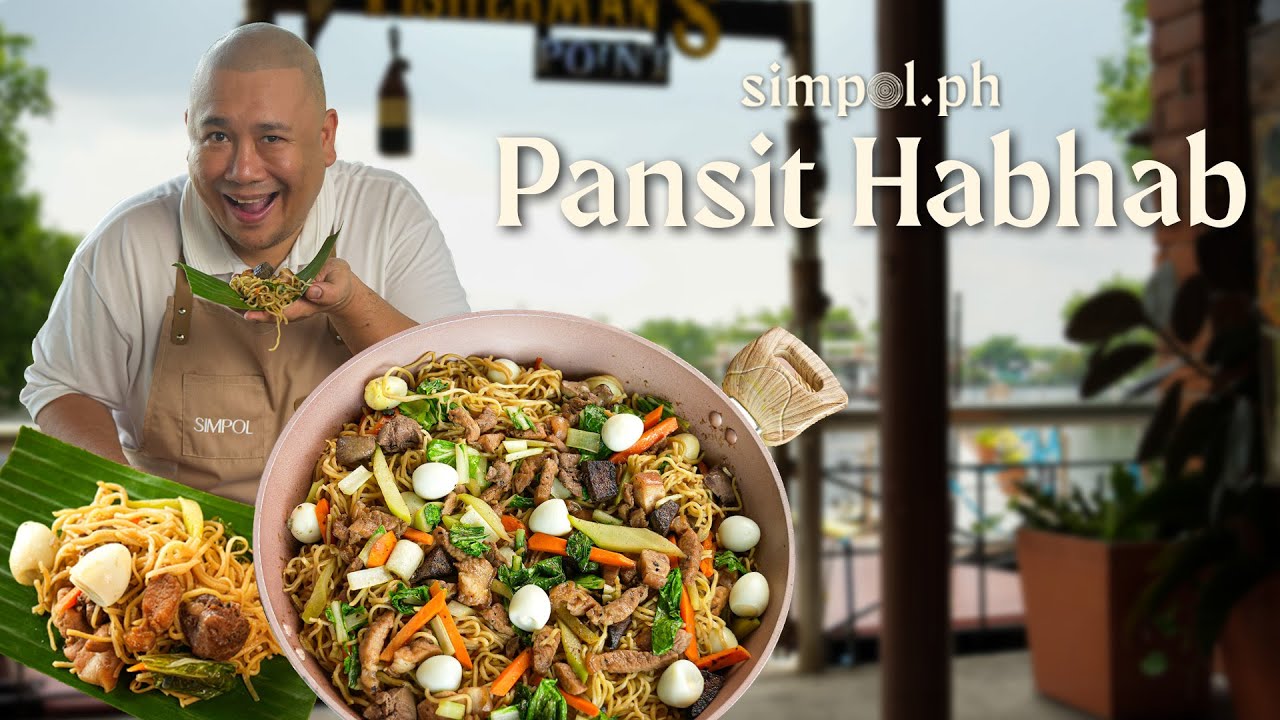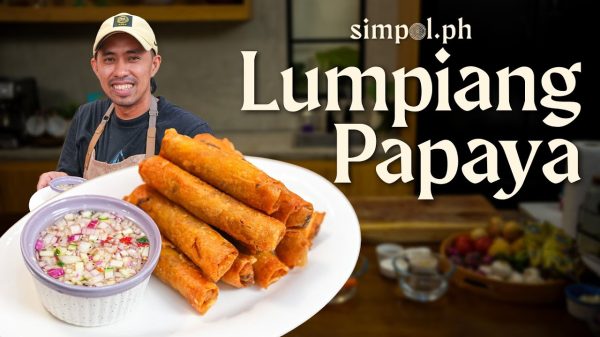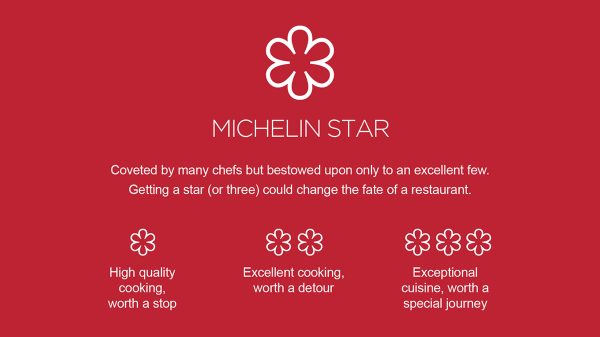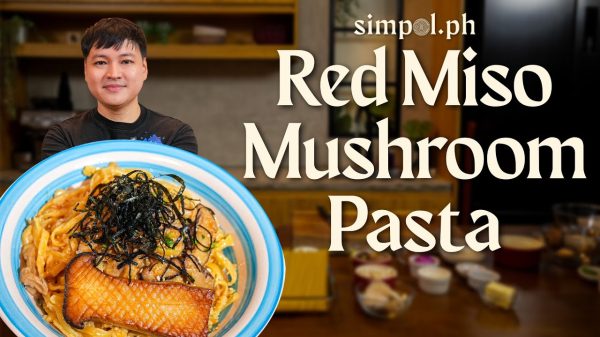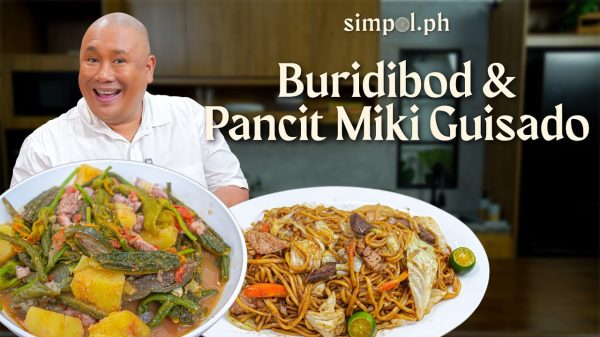A Story from the Kitchen
In Quezon province, Pansit Habhab is more than just noodles—it is culture served on banana leaves, eaten with vinegar, and enjoyed standing up or on the streets during a fiesta. Farmers once made this dish using whatever was fresh from the field—vegetables, pork, or even no meat at all. Its name comes from the way it’s eaten: “habhab,” a joyful slurp directly from the leaf, no utensils needed.
This version keeps that spirit alive but makes it Simpol—straightforward, practical, and full of flavor. It’s a dish that celebrates community, the Filipino way of stretching food for everyone, and the joy of sharing noodles with friends and family.
Pansit Habhab Recipe
Ingredients
- 1 2 Pansit Habhab Recipe
Set A: Meat and Broth
- 250 g pork belly sliced (with some fat)
- ½ tsp salt
- ½ tsp black pepper
- 2 tbsp soy sauce
- ½ cup chicken liver and gizzard atay at balon-balunan, cleaned and chopped
- 3 cups water for boiling and broth base
Set B: Aromatics and Vegetables
- 2 tbsp cooking oil
- 4 cloves garlic minced
- 1 pc onion chopped
- 1 pc sayote or pechay stalks sliced
- 1 cup pechay leaves or other leafy greens
- Salt and pepper to taste
Set C: Seasoning and Sauce
- 2 tbsp soy sauce
- 1 tbsp oyster sauce
- 1 pinch black pepper
Set D: Noodles and Toppings
- 250 g egg noodles preferably fresh egg noodles
- 1 pc banana leaf for serving
- Vinegar for dipping and serving
Instructions
Set A: Meat and Broth
- In a pot, boil pork belly with water, salt, pepper, and soy sauce until tender.
- Once cooked, remove the pork and set aside. Keep the broth as your flavor base.
- In the same pot, add chicken liver and gizzard. Season lightly with soy sauce and pepper. Cook until tender, then set aside with pork.
Set B: Aromatics and Vegetables
- In a large wok, heat oil. Sauté garlic and onion until fragrant.
- Add sayote or pechay stalks, followed by leafy greens. Season with salt and pepper. Cook briefly to keep vegetables crisp.
Set C: Sauce
- Pour the reserved broth into the wok with sautéed vegetables.
- Season with soy sauce, oyster sauce, and a touch of black pepper.
- Let simmer to allow flavors to blend.
Set D: Noodles and Assembly
- Add egg noodles to the wok. Toss well to coat with the sauce and vegetables.
- Return pork, liver, and gizzard into the pan. Mix everything together until heated through.
- To serve the traditional way, lay banana leaves on the table, portion the noodles on top, and enjoy with vinegar on the side.
In Quezon province, Pansit Habhab is more than just noodles—it is culture served on banana leaves, eaten with vinegar, and enjoyed standing up or on the streets during a fiesta. Farmers once made this dish using whatever was fresh from the field—vegetables, pork, or even no meat at all. Its name comes from the way it’s eaten: “habhab,” a joyful slurp directly from the leaf, no utensils needed.
This version keeps that spirit alive but makes it Simpol—straightforward, practical, and full of flavor. It’s a dish that celebrates community, the Filipino way of stretching food for everyone, and the joy of sharing noodles with friends and family.
Simpol Cooking Notes
- If pork belly is too fatty, use leaner cuts or even chicken. The important part is making a tasty broth.
- Egg noodles work beautifully because they are springy and not greasy. But if you can’t find them, regular miki or canton noodles will do.
- Vinegar is not just an option—it is part of the experience. A quick dip balances the richness of the dish.
- Banana leaves make the meal festive and authentic. If not available, use clean plates—but for the full Quezon feel, go with dahon ng saging.
- Remember: habhab is eaten with joy and without fuss. No fork, no spoon—just pick it up and slurp straight from the leaf.


